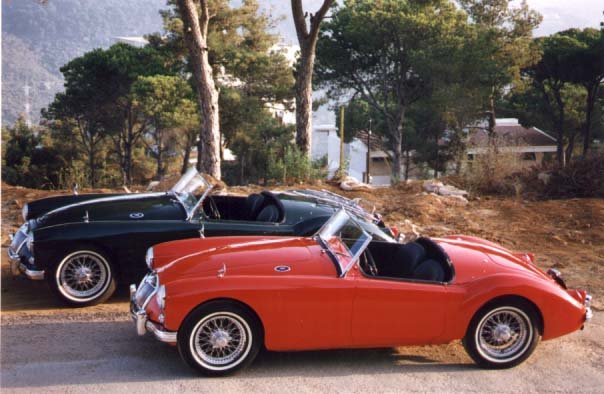The world's premier television sport had a major birthday this week. On May 13, 1950, the first ever Formula One World Championship race was held at the UK’s Silverstone motor racing circuit with Alfa Romeo storming to an historic 1-2-3 podium lockout. Italian Giuseppe Farina, nephew of the founder of the influential automotive stylist Pininfarina, dominated proceedings in his 300 bhp Alfa Romeo 158 ('15' for 1,500cc and '8' for 8 cylinders), with the three Alfas two laps clear of the 21-strong field. F1's influence has grown over the last 60 years to the point where more than 600 million people watch each race - that is, one in every eleven human beings watches each F1 race.
Alfa Romeo's global sporting reputation was well established prior to Formula One. It won the first “world championship” in 1928, and throughout the 1920s and 30s it scored prestigious wins in races such as Targa Florio, Mille Miglia and Le Mans. It was during this period that the term “supercar” was first used by a British journalist, and it was used in reference to an Alfa. Many advances in aerodynamics, styling and automotive body construction were pioneered by the Italian brand that wears the winners laurel in its logo thanks to that 1928 world title.
Having made their motor racing debut in 1937, the 158s spent the war years dismantled and hidden in various inconspicuous places including, legend has it, an Italian cheese factory.
The birth of Formula One gave the already 13 year-old cars an opportunity to shine and Alfa Romeo completely dominated the first season of competition with the pre-war design.
The Formula One World Championships were still largely European-based, with the “token” overseas event being the Indianapolis 500, which Alfa did not contest due to its minuscule post-war budget. It won every race it contested though, with three wins apiece to Farina and Fangio.
The following year, the 158's derivative, the 159, again won the title and the likes of Farina, Fangio, Parnell and Fagioli became household names across Europe, as did the brand of the car which won ten of the first 13 European Grands Prix. While the Italian marque's performance motoring heritage extended a half century before Formula One, there is little doubt that the first years of Formula One established the foundation for the legions of Alfisti which remain strong to this day. Even the Top Gear crew insist that you cannot legitimately lay claim to being a "petrolhead" unless you have owned an Alfa.
At the end of the 1951 season Alfa withdrew from F1 competition. It had won 10 of 13 European-based F1 Grands Prix using six engine blocks manufactured prior to WW2 and with limited resources dwindling, and the rise of Ferrari and Maserati imminent, it had achieved its goals.
Alfa Romeo's Centenary Year is 2010, and a range of events are planned. Alfisti in particular have good reason to visit this year's Goodwood Festival of Speed (July 2-4), where Alfa will be the featured marque and a 159 will be among a host of historic Alfas taking part in the event.
As the inaugural F1 motor racing champion, Farina's career is well worth a read. He was very lucky that the identical machine of Juan Manuel Fangio proved to be so fragile in 1950, as Fangio won every race he finished and went on to be widely regarded as the best ever. Farina regularly employed “roughhouse” driving tactics that would not be tolerated today, and was without doubt one of the hardest men ever to front an F1 starter. His background of privilege had unfortunately given him an arrogance to match his fearlessness, endearing him to few. It is an enormous pity that he were not driving today, as he would no doubt enliven the sport manifold.
“El Maestro” Fangio once said of Farina, "because of the crazy way Farina drove, only the Holy Virgin was capable of keeping him on the track, and we all thought one day she would get tired of helping him." Farina survived his motor racing career, but died on public roads in 1966.
This article is however, about the sixtieth anniversary of a sport which has become more alluring than any other in history. If the television viewing audiences are to be believed, and the expenditure of billions of advertising dollars globally are based on these figures, then roughly one in eleven human beings on Planet Earth watches each F1 race on average – a truly astonishing fact.
Formula 1 continues to be the most alluring and fascinating of public soap operas – we're not sure if that's due to the massive entourage of press which follow the circus around the globe and focus the microscope on every aspect, or the character of the people which the brightest spotlights attract. Regardless of why, it is undoubtedly the greatest entertainment man has yet synthesized.
photo credit: © 2010 gizmag.com
text credit: Mike Hanlon / © 2010 gizmag.com

